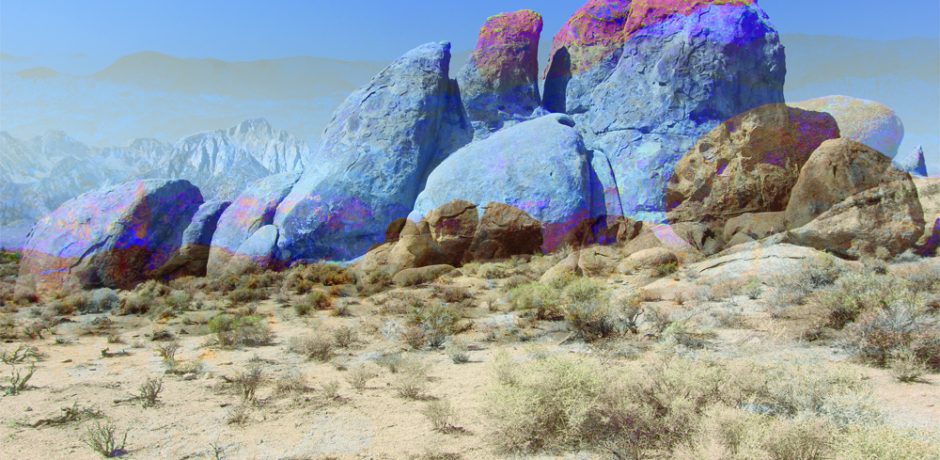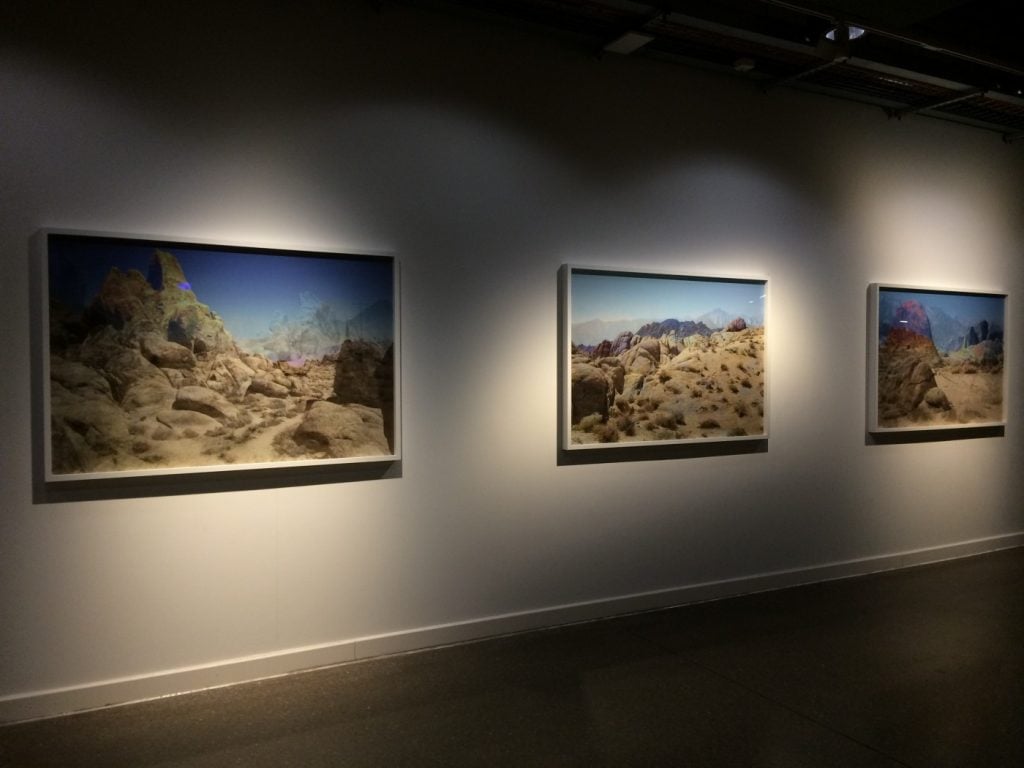
In the Lay of the Land (and other such myths) Victoria Lucas invites the viewer to delve into several desert scenes, which are both a reality and an illusion. Lucas digitally alters her images to create added layers and colours which appear like mirages across the desert landscapes. This manipulation reflects the concept behind the work: what a landscape can represent and how this affects the role of gender in society.
The first image of the exhibition is expanded to cinematic proportions, which is precisely Lucas’ intention. The photo engulfs the viewer like a scene from the big screen; in fact, old Western films were shot in this location (the Alabama Hills) and, although there is very little physical evidence of these Westerns visible in the landscape, these male-dominated activities still leave their mark ideologically.

The other images all hold their own, and the smaller scales mean the photos’ details appear wonderfully intricate. Considering Lucas depicts a landscape that is incredibly dry and devoid of life, the intensity of colour in her images creates a visual energy. The rich, earthy tones of the desert contrast with the never ending blue of the sky, conveying the baking heat of the sun. Lucas adds flickers of electric blues, pinks and greens across the landscape; she takes the recognisable and transforms it into something belonging to fantasy.
Lucas takes us further into the world of illusion with the composition of her work. She forms different horizons within the images by layering and repeating aspects. It creates uncertainty in the landscape; it is difficult to tell what’s real and what’s an illusion. Robust rocks become ghost-like, blurring the lines between the solid and the atmospheric.
The Lay of the Land is part of a bigger body of work which looks at how gender can be manipulated. By selecting the Alabama Hills, Lucas takes a place used to display masculinity and, as a female artist, changes the perspective from which it is viewed. These landscapes are real, but also imaginary—perhaps the same can be said for gender roles.
Filed under: Art & Photography
Tagged with: exhibition, HOME, Lay of the Land (and other such myths), manchester, photographer, photography, Victoria Lucas



Comments